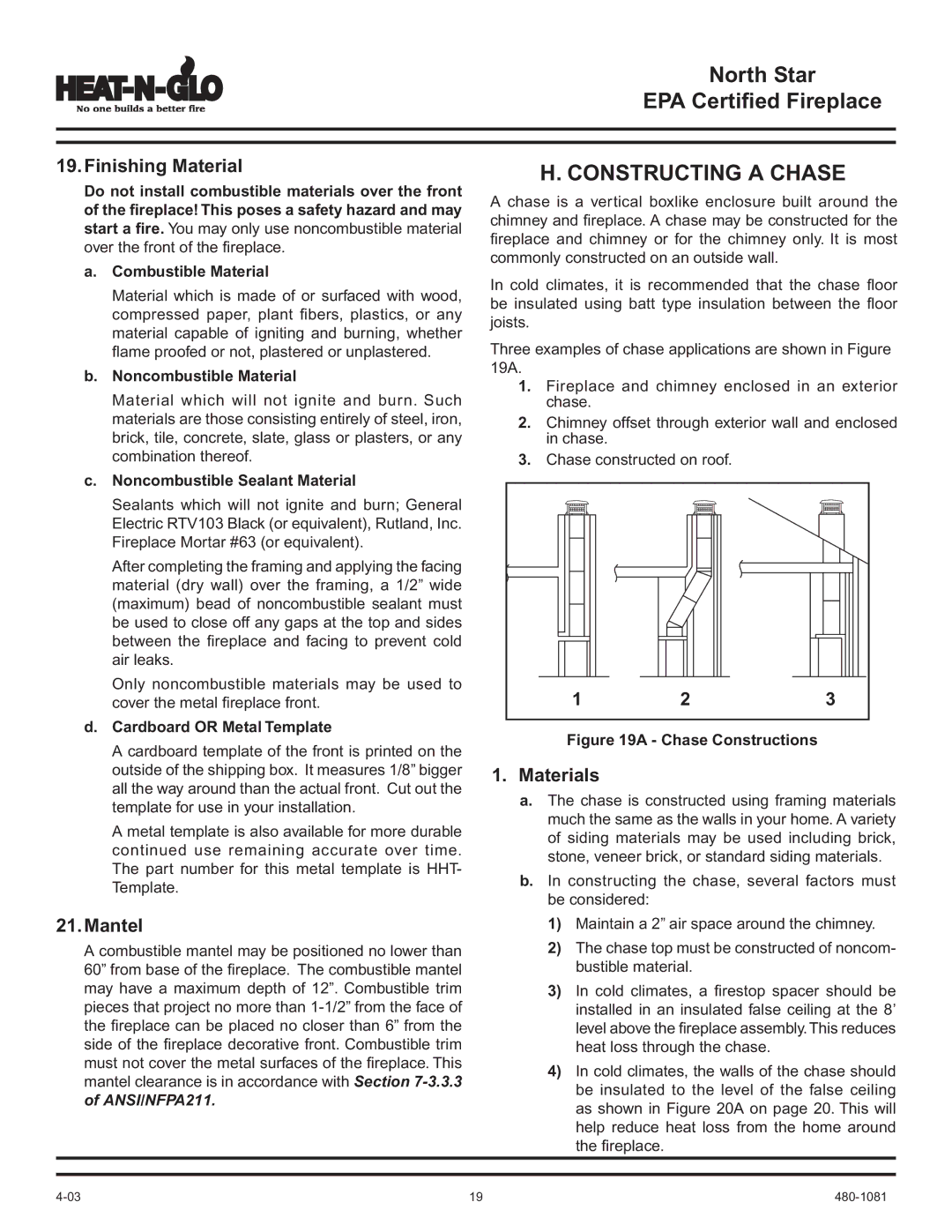
North Star
EPA Certified Fireplace
19. Finishing Material
H. CONSTRUCTING A CHASE
Do not install combustible materials over the front of the fireplace! This poses a safety hazard and may start a fire. You may only use noncombustible material over the front of the fireplace.
a.Combustible Material
Material which is made of or surfaced with wood, compressed paper, plant fibers, plastics, or any material capable of igniting and burning, whether flame proofed or not, plastered or unplastered.
b.Noncombustible Material
Material which will not ignite and burn. Such materials are those consisting entirely of steel, iron, brick, tile, concrete, slate, glass or plasters, or any combination thereof.
c.Noncombustible Sealant Material
Sealants which will not ignite and burn; General Electric RTV103 Black (or equivalent), Rutland, Inc. Fireplace Mortar #63 (or equivalent).
After completing the framing and applying the facing material (dry wall) over the framing, a 1/2” wide (maximum) bead of noncombustible sealant must be used to close off any gaps at the top and sides between the fireplace and facing to prevent cold air leaks.
Only noncombustible materials may be used to cover the metal fireplace front.
d.Cardboard OR Metal Template
A cardboard template of the front is printed on the outside of the shipping box. It measures 1/8” bigger all the way around than the actual front. Cut out the template for use in your installation.
A metal template is also available for more durable continued use remaining accurate over time. The part number for this metal template is HHT- Template.
21. Mantel
A combustible mantel may be positioned no lower than 60” from base of the fireplace. The combustible mantel may have a maximum depth of 12”. Combustible trim pieces that project no more than
A chase is a vertical boxlike enclosure built around the chimney and fireplace. A chase may be constructed for the fireplace and chimney or for the chimney only. It is most commonly constructed on an outside wall.
In cold climates, it is recommended that the chase floor be insulated using batt type insulation between the floor joists.
Three examples of chase applications are shown in Figure 19A.
1.Fireplace and chimney enclosed in an exterior chase.
2.Chimney offset through exterior wall and enclosed in chase.
3.Chase constructed on roof.
1 | 2 | 3 |
Figure 19A - Chase Constructions
1.Materials
a.The chase is constructed using framing materials much the same as the walls in your home. A variety of siding materials may be used including brick, stone, veneer brick, or standard siding materials.
b.In constructing the chase, several factors must be considered:
1)Maintain a 2” air space around the chimney.
2)The chase top must be constructed of noncom- bustible material.
3)In cold climates, a firestop spacer should be installed in an insulated false ceiling at the 8’ level above the fireplace assembly.This reduces heat loss through the chase.
4)In cold climates, the walls of the chase should be insulated to the level of the false ceiling as shown in Figure 20A on page 20. This will help reduce heat loss from the home around the fireplace.
19 |
